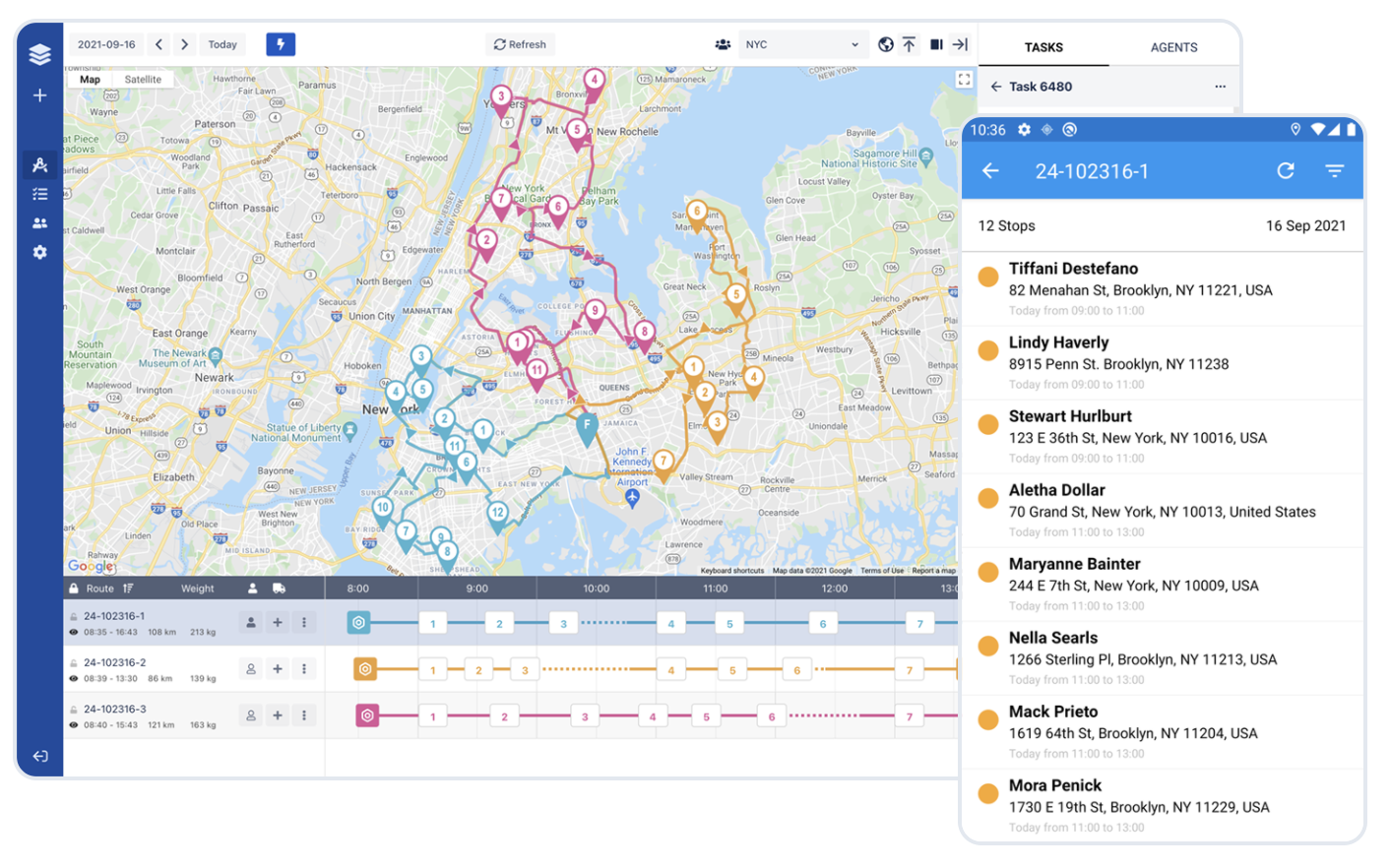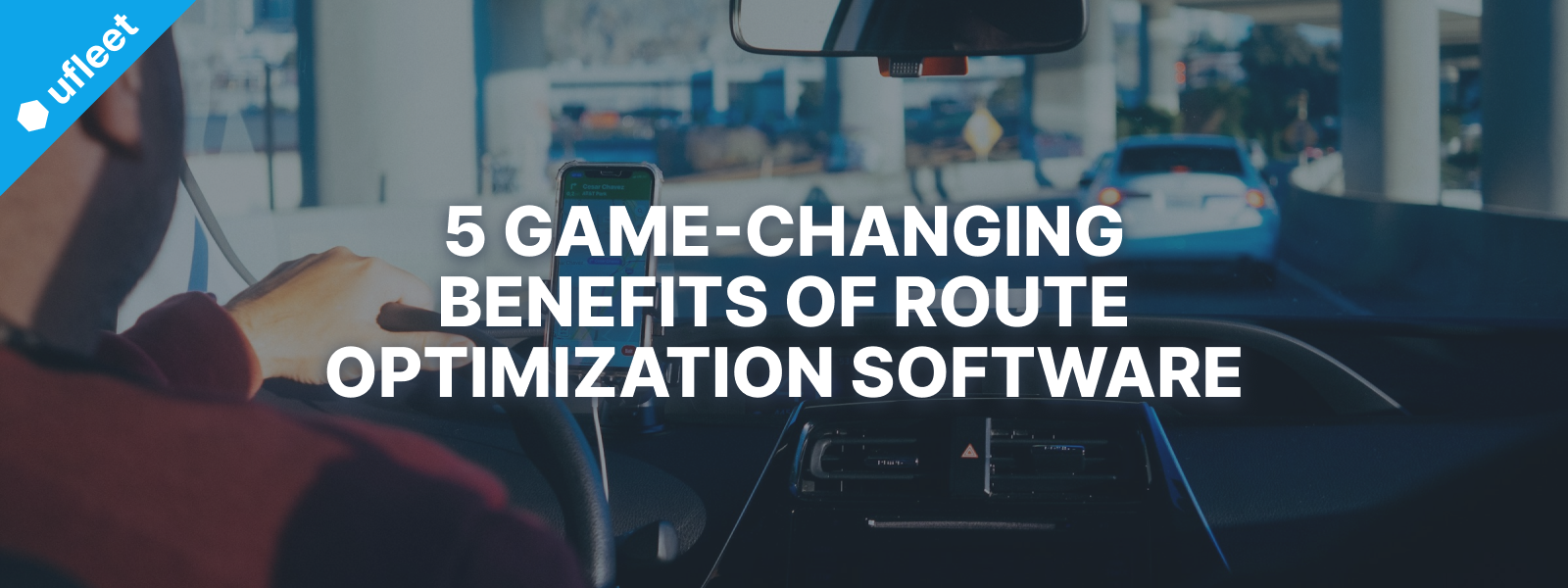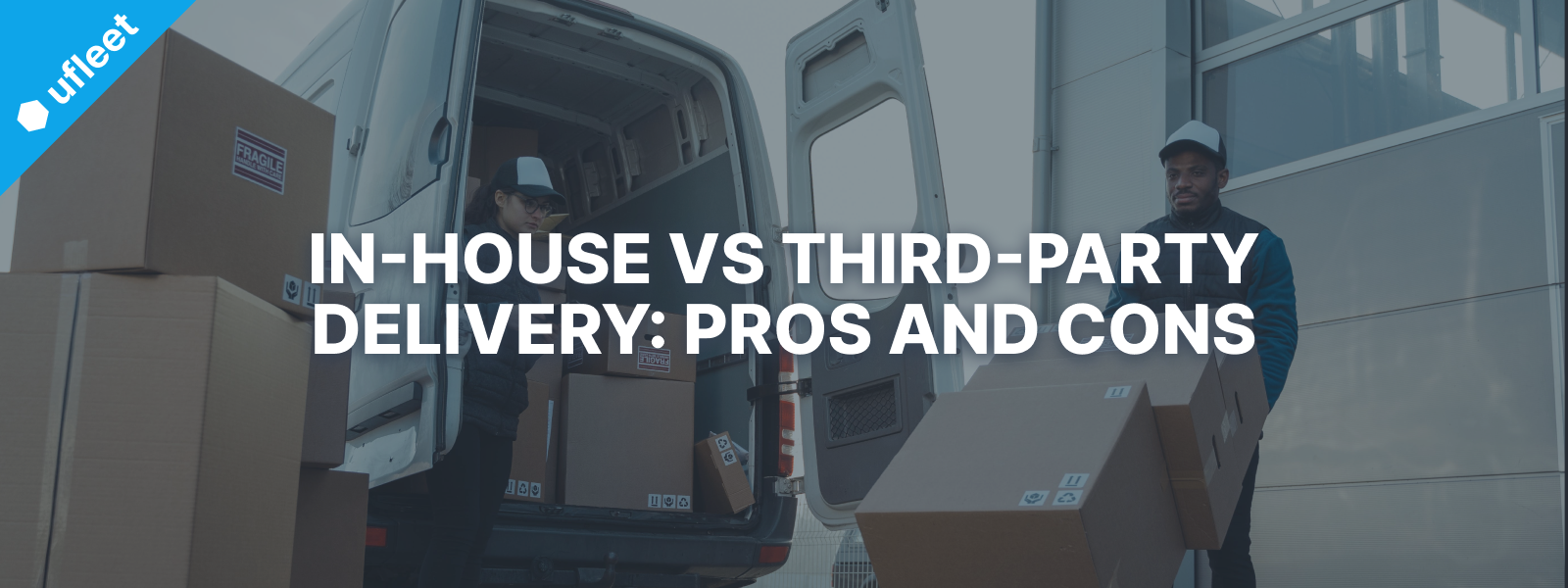This guide explains what route optimization is, how it works, how to optimize delivery routes and what are the best apps for this.
Route Optimization Explained: Guide to Efficient Deliveries
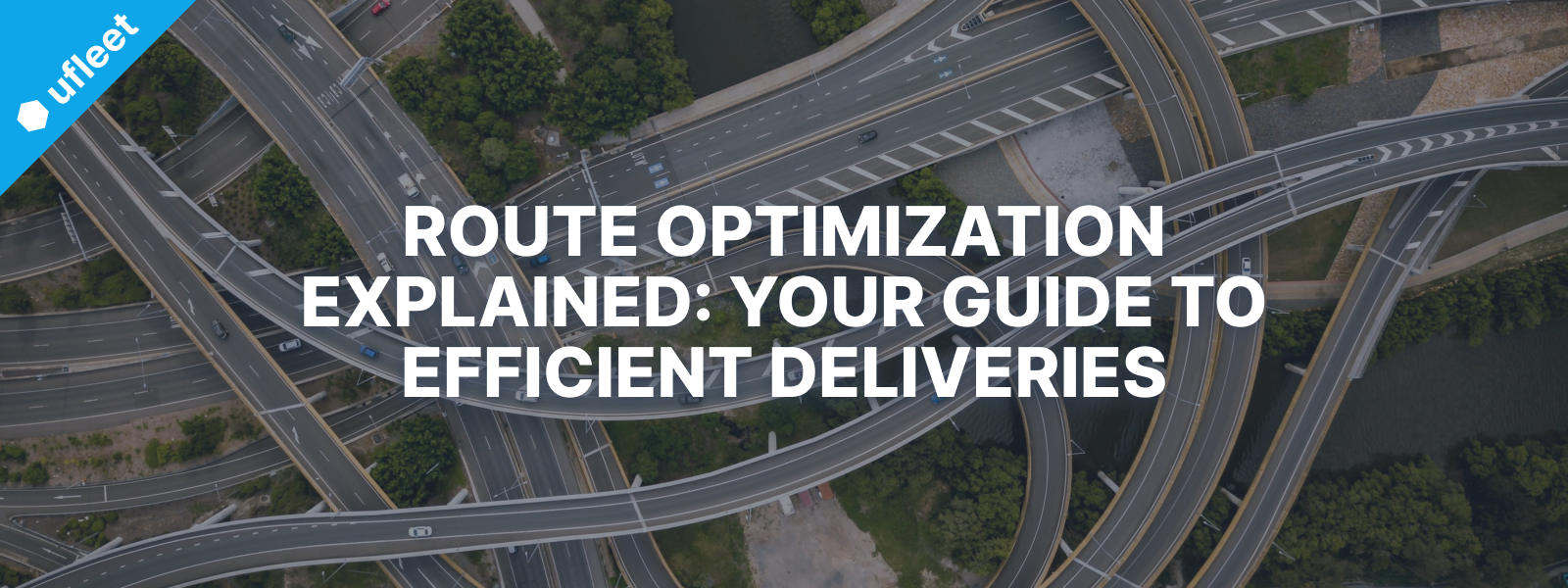
Delivery route optimization is one of the most important processes for delivery businesses. It finds the best delivery routes, cuts fuel and labor costs, extends vehicle lifespan, and improves customer satisfaction. If delivery volumes are high it's even a critical process, without which the business won't be able to operate.
Unfortunately, it’s easy to get overwhelmed by the complexity of route optimization, its algorithms and the math behind them. And indeed, it’s not a piece of cake. We know it from experience—from developing Ufleet, our route optimization software.
All these years of development and millions of optimized routes for our clients allowed us to dive so deep into the matter, that route optimization has become part of our DNAs.
That’s why we decided to create this guide and help you understand the ins and outs of route optimization. Here’s what you’ll learn about:
- What is route optimization
- Why does route optimization matter
- What are the challenges of route optimization
- How does route optimization work
- How to optimize delivery routes
- Is route optimization software worth the money
- What's the best software for route optimization
- What’s the future of route optimization
We hope that by the end of this post, you’ll have become a pro in delivery route optimization!
What is route optimization?
Route optimization is a business-critical process in logistics and delivery that identifies the most efficient way to reach a series of destinations.
Most efficient means performing best in terms of distance, travel time, fuel consumption, vehicle load, delivery time windows, and more. The best mix of parameters depends on your preferences and business needs.
Here’s what I mean:
Let's say I have an online grocery store that makes hundreds of deliveries per day. On that scale, every single mile, every gallon matters. For me, even the slightest reduction in travel distance will result in huge overall savings. So travel distance will surely be one of the optimization parameters that's most important for me.
On the other hand, if I have a pastry shop and deliver cakes, keeping the cakes intact upon delivery is of the highest importance. That’s why, for me, the best route does not necessarily mean the fastest or shortest. For me, it means the one that's the least bumpy, so the cakes are safe.
Why does route optimization matter?
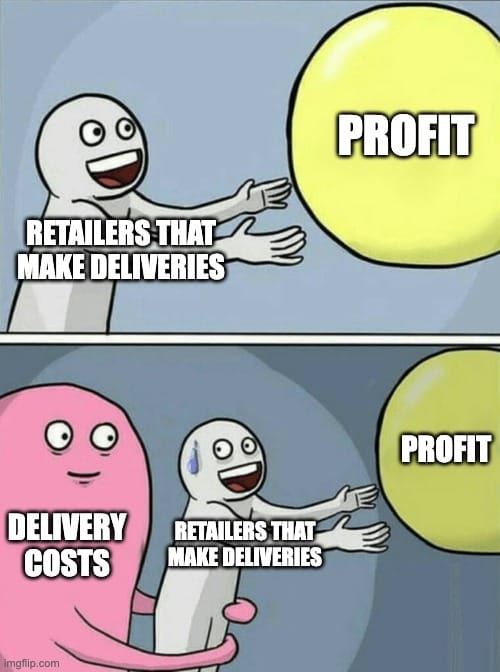
Businesses that make deliveries sooner or later face the problem of the continously growing delivery costs that come as a result from the increase in delivery volumes, inflation and rising fuel prices. Costs are also rising because of vehicle wear, salaries for drivers and dispatchers, more driving hours, etc.
In addition, the operational complexity of planning and executing delivery routes grows too. Communication between drivers, dispatchers, and customers becomes more difficult as well. Optimizing hundreds to thousands of routes becomes difficult.
In other words—the more deliveries you make, the more expensive and chaotic it gets.
Route optimization directly addresses these problems by:
- calculating thousands of delivery routes in seconds
- reducing unnecessary mileage and fuel consumption
- decreasing the time for route planning and dispatching
- enabling you to manage large delivery volumes
- improving customer satisfaction
Ultimately, it improves profitability and efficiency, because your delivery service becomes faster, cheaper, and more reliable. Last but not least, your carbon footprint gets lower too. 🌿
What are the challenges of route optimization?
Route optimization has its roots in the mid-20th century. It all started with a key problem known as the Traveling Salesman Problem (TSP). Think of it this way:
You're a salesperson who needs to visit several cities and return home, and you want to travel the shortest distance possible. Despite sounding simple, this problem is extremely complex, especially at scale, because the math behind it is mind-blowing!
Let me show you:
- 1 delivery stop results in 1 possible route
- 2 delivery stops result in 2 possible routes
- 3 delivery stops result in 6 possible routes
- 5 delivery stops result in 120 possible routes
- 10 delivery stops: Over 3.6 million possible routes!
This exponential growth makes it incredibly challenging to find the most efficient routes. At some point, it even becomes impossible to do it manually. Nowadays, the most common obstacles for delivery route optimization are even more:
- Big set of rules: You must consider time slots, vehicle capacity, road constraints, and more.
- Unexpected issues: Traffic, misinformation, and delays can mess with your plan. These are hard to predict but can change everything.
- Handling growth: More stops and vehicles means more data which requires more time and resources to solve the problem.
- Lots of options: The more stops you add, the more possible routes you can take. Figuring out the best route quickly becomes tricky.
How does route optimization work?
Route optimization works through math. There are many mathematical algorithms that solve the route optimization problem to a different extent. The most common types include:
- Shortest path algorithms: They focus on finding the shortest route between two or more points. In this case, only distance matters.
- Exact algorithms: They find the best route in situations where multiple factors matter simultaneously (e.g. distance, time windows, vehicle capacity). Precision is high but calculations might be extremely slow, especially with a large number of stops.
- Heuristic algorithms: These algorithms consider multiple factors too, and produce near-optimal results. They are a little bit less precise than the exact algorithms but are faster and require fewer computational resources.
Which one is best?
In the context of practical, real-life route optimization, heuristic algorithms perform best. This is because they provide optimal results without taking forever to calculate. Heuristic is what modern route optimization software uses.
For comparison, exact algorithms require too much computational power and calculation time—it might take hours. Shortest algorithms on the other hand optimize for distance only which is not sufficient for achieving efficient deliveries.
How to optimize delivery routes?
Simply put, there are two ways to address delivery route optimization:
- manual optimization
- automated optimization (via a software)
Manual optimization
Manual route optimization means you rely on your experience, knowledge, and judgment to pick the best delivery routes. You also do the planning, dispatching, and monitoring manually.
You can use physical maps, pen and paper, and/or digital tools like Excel, Sheets, and Google Maps. Although there is actually technology in the mix, it's still you who does the heavy lifting.
This option is suitable for businesses with low delivery volumes and that are tight on budget. It’s free and straightforward. Its downsides include being extremely time-consuming, rigid, not scalable, and prone to errors.
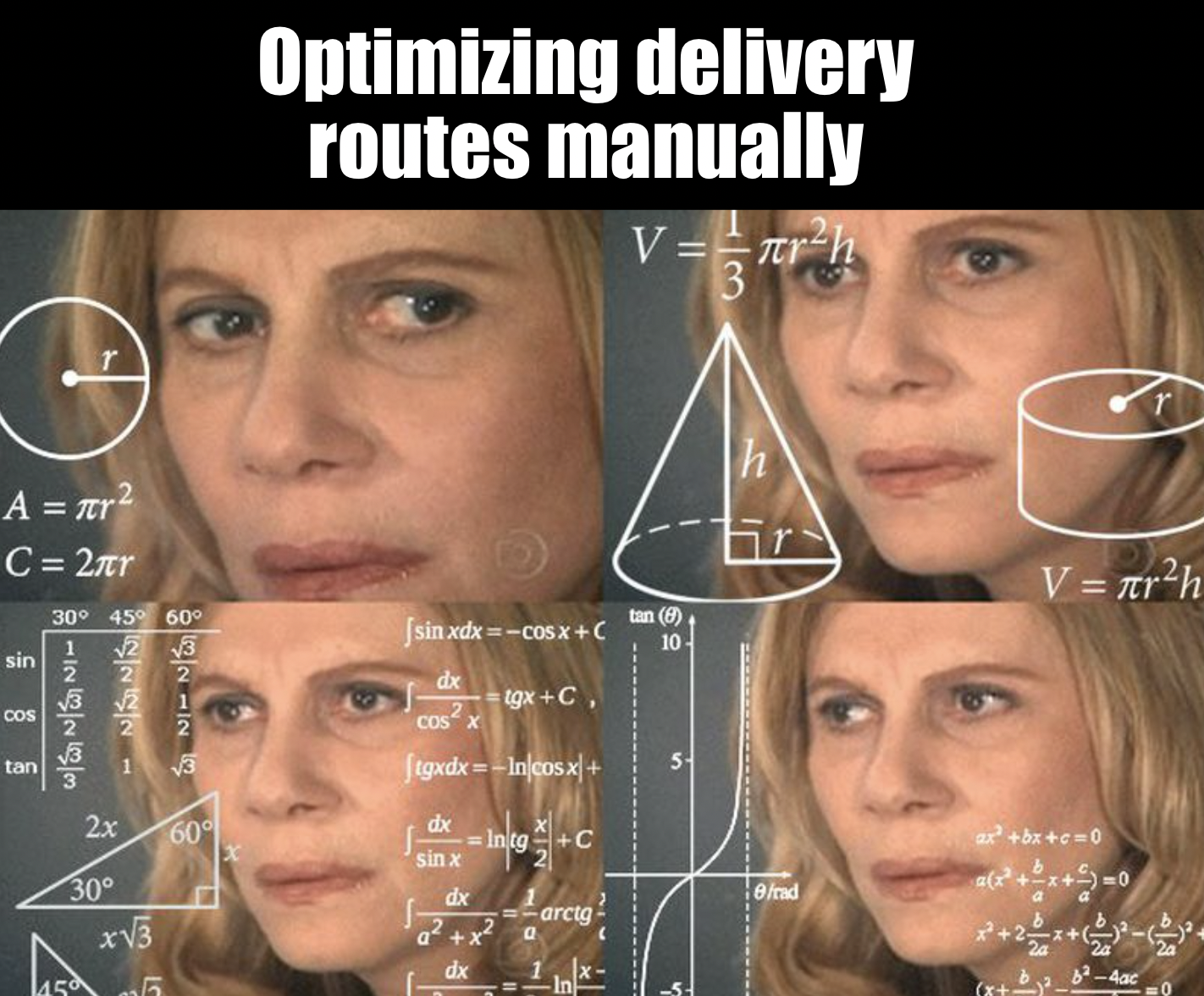
Automated optimization
Automated means using route optimization software. That's the most robust method to find the best delivery routes.
Route optimization software is technology that helps you automate delivery planning, dispatching, and communication between dispatchers, drivers, and customers. It’s fast, efficient and supports deliveries at scale.
It brings numerous benefits that directly impact the bottom line. Just to name a few:
- significantly decreases delivery costs
- turns hours of route planning and optimization into minutes, or even seconds
- allows you to manage huge delivery volumes (e.g. thousands or stops)
- provides real-time tracking and transparency
- provides you with data and insights into your delivery operations
- helps dispatchers, drivers, and customers communicate with ease
Ufleet, our route optimization software, looks like this:
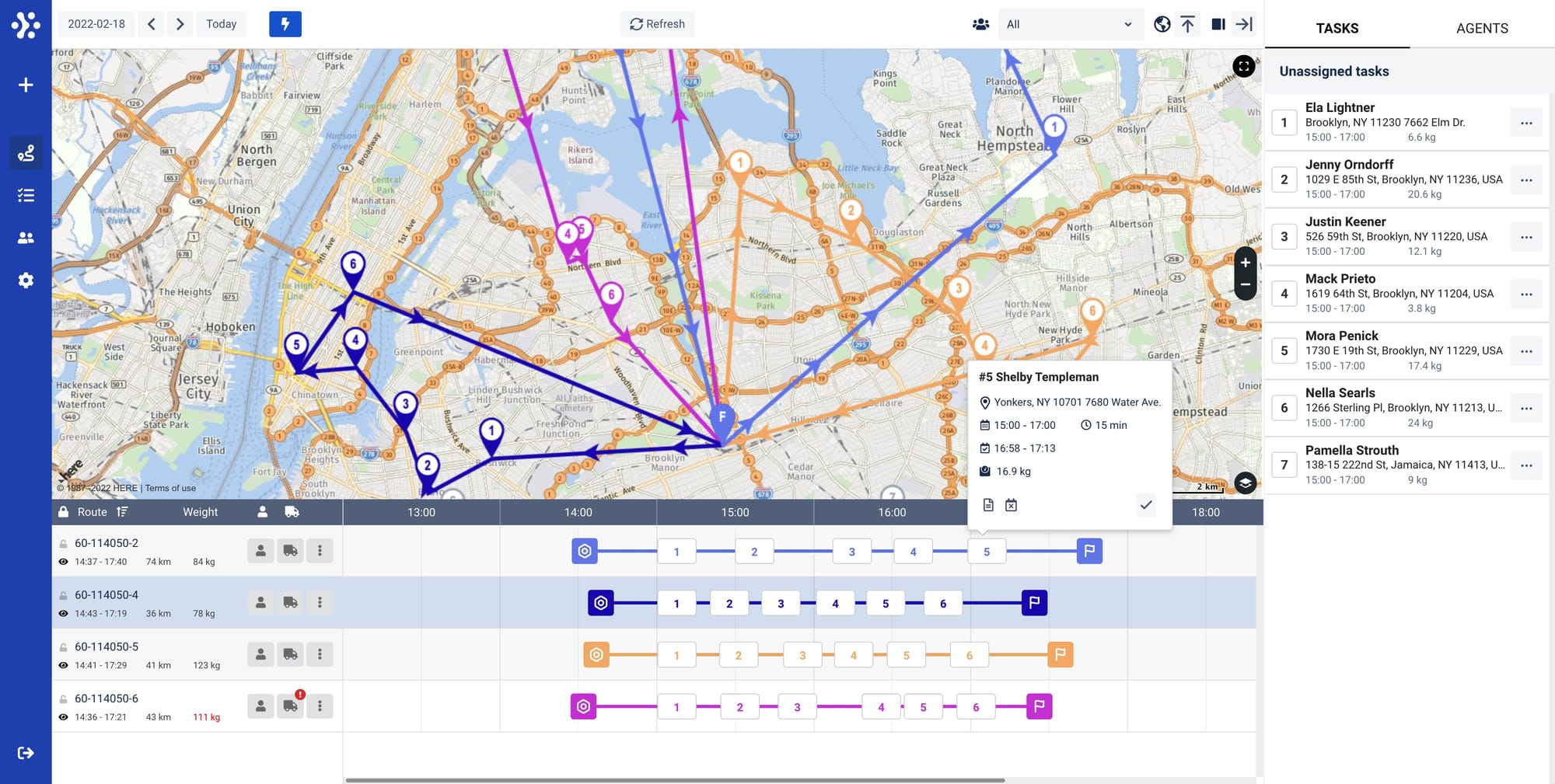
How does route optimization software work?
You feed the software with a set of constraints (time window, vehicle capacity, etc), and then it calculates and returns the optimal routes with the click of a button. The more constraints a software can handle, the more value it can bring to the business.
Once you get the routes (in a matter of seconds), you distribute them to your drivers via the platform. They receive them immediately on their driver mobile app. When they start driving, you can monitor the status of deliveries in real time and make and communicate adjustments if needed.
Is route optimization software worth the money?
If you make a few hundred deliveries per month, maybe you're still good with Excel and manual delivery planning.
But if you deliver at scale, then definitely YES, it's worth it! The ROI of route optimization software in this case can be significant. Here’s an estimation of the amount of savings you can expect:
- up to 70% in route planning
- up to 20% in mileage and driver time
- up to 20% in communication
- up to 10% in loading time
- up to 20% in administration
In most cases, businesses observe a return on their investment within 6-9 months depending on the specifics of their operations and the speed and quality of adoption. Our team created a super detailed guide on how to calculate the ROI of route optimization software—check it out for more information.
What's the best software for route optimization?
There are numerous great software solutions for route optimization. Each of them has its strengths and weaknesses and offers a different set of features and integrations.
Which one is best for you depends on your needs, business model, priorities, growth plans, and more. Here are some of the most popular route optimization software solutions:
- Ufleet (try it for free here)
- Routific
- Onfleet
- Circuit
- DispatchTrack
- Route4Me
- Upper
- Tookan
You can check our guide to choosing route optimization software if you're on the lookout for one. It follows a step-by-step process that will help you evaluate your priorities and pick a technology provider that will support your needs and future growth.
What's the future of delivery route optimization?
Technology is developing faster than ever! We can expect better algorithms that make smarter, faster, and more environmentally conscious delivery routing decisions.
Although we don't have a crystal ball, here's our take on what will shape the future of route optimization:
- AI and Machine Learning will help us get even more precise results, learn from historical data, and make decent assumptions about the future. This might help us predict traffic jams, identify patterns, and improve overall delivery efficiency.
- Internet of Things (IoT) devices, such as smart sensors, will provide real-time data on vehicle location, traffic, weather, and road conditions. This data will enhance accuracy and help us adapt to changes.
- Sustainability and green logistics will become more important than ever. Optimizing routes for electric vehicles and reducing emissions will become a priority.
We hope this post helped you gain a decent understanding of what route optimization is, what makes it challenging, and what you can do to find the best delivery routes with minimum effort.
If you found it helpful, subscribe below to receive similar insights straight in your inbox.❤️✉️
Never miss a post
You may also like…
You too can reduce costs and improve efficiency with Ufleet
- plan and optimize delivery routes
- manage and empower drivers
- enhance customer experience
- make data-driven business decisions
We’d love to learn about your challenges.
Leave your email and we’ll get back to you.
